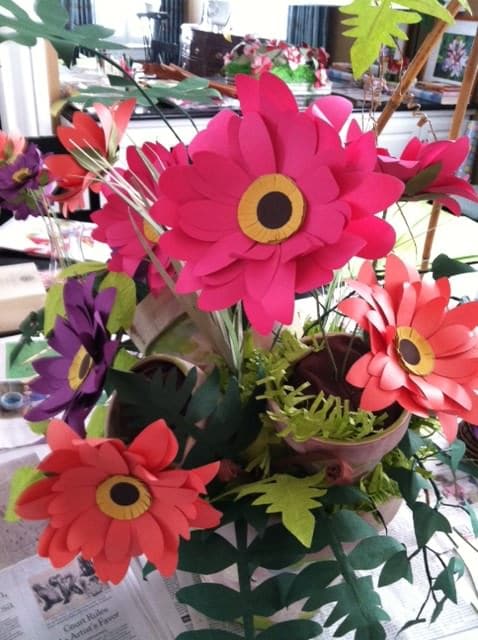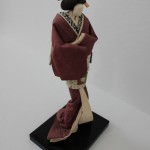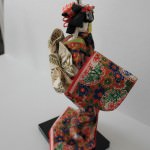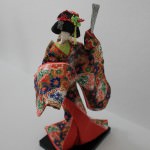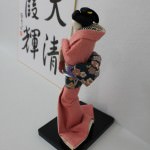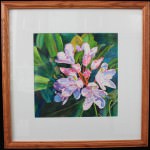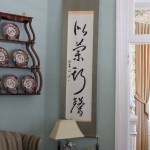Nancy is a recent customer of Paper Connection, and has graciously sent us photographs of her transforming Momi Kozo, or crinkled mulberry, to beautifully arranged flowers. We thought we’d grab on to this hot off the press inspiration and ask her to be our Artist of the Month for June. Here is a different spin of the usual questionnaire, as Nancy contributed sans Q & A her insightful training, methods, and background. Introducing Nancy, from South Carolina, in her own words:
“Watercolor paintings of flowers or still lifes is my usual involvement with fine paper, but when Japanese paper enters the conversation, there is an entirely different group of interests that emerge. There is Japanese calligraphy, both kanji and hiragana. Paper dolls, washi ningyo, are another passion. Fairly recently, paper flowers and foliage have become an interest.
As a very young girl, my favorite place to play was with a girl whose father worked for a printer. She had a shelf full of all colors and textures of paper he had brought her. It was very exciting! At about the same time, paper dolls appeared, and caught and held my interest. I still collect them, and made one for a little girl who was undergoing chemotherapy, and had lost her hair. It was a wig paper doll, with fanciful and silly wigs to cheer up the child with their outlandish colors and designs.
Japanese paper was an exciting aspect of our stay in Japan. While my husband worked, I attended classes, starting with “hari-e” or torn paper pictures. There, I learned about different Japanese papers and their properties. It was also my first experience with a “sensei” or teacher/master. I decided to do a little improvisation with one of the designs, and before the glue had dried, the sensei stripped the paper off the board, and repositioned it in its proper place. So much for creative ideas! It had been a longtime ambition to learn calligraphy. Every Saturday I went to class, watched while the sensei remarked everyone’s calligraphy with brilliant orange ink, and went home with my assignment for the next week, using reams of calligraphy practice paper, trying to properly form shapes new to me. Later, when some amount of proficiency had been attained, beautiful paper appeared, and shikishi (paper boards for artwork) arrived in boxes. Always, the paper was perfectly suited to each purpose.
I have forgotten now how I became interested in Japanese paper dolls. That is where I learned how paper could be manipulated, with such striking results. Each doll was different, patterned after mostly historical types, and they began to accumulate with their colorful kimonos and fanciful hairdos.
In the 1980’s there were several paper stores in Hiroshima, a cool manufacturer in Kyoto, and a manufacturer in Tokyo. I began to collect all the paper I could, knowing I could not possibly use all of it, but finding each new type or design more exciting than the one before. Now the stores in Hiroshima are gone, but Paper Connection is stocked with fabulous papers from all over Asia, and the knowledgeable staff is most helpful. I look forward to learning more about Japanese paper, and, most of all, adding to my collection.
The only paper I have ordered from Paper Connection so far is Momi Kozo. It has long been a favorite paper because of the large, luminous color range, and great texture. It has been invaluable for washi ningyo, and now, making paper flowers, it is very versatile and is light enough that two pieces can be glued together. It is also very strong, and can absorb the rigors of twisting and bending, necessary in both washi ningyo and floral art. Paper Connection has a large selection of Momi Kozo and I purchased one of every color. I look forward to exploring more of paper Connection’s broad stock of exotic papers.
The artist I would dearly love to talk to is Isabelle de Borchgrave, a Belgian woman who specializes in creating life size historic costumes from many kinds of paper, including lens paper. Her recent book, “Pulp Fashion” is a stunning display of her vision, talent, and appreciation for fine paper, and the extremes to which it can be pushed with some ingenuity.”
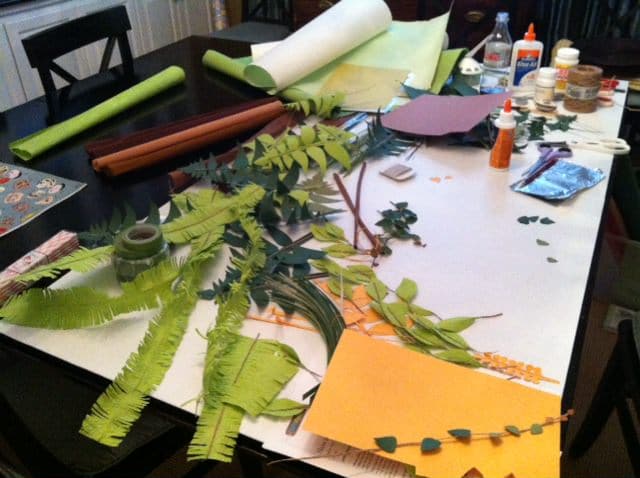
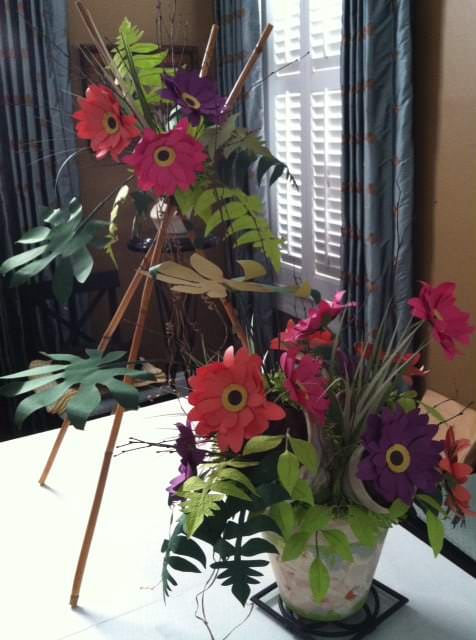
Nancy, thank you so much for telling us about your background, your inspiration, and Isabelle de Borchgrave. Your kindness to others is worthy of example, and we look forward to seeing more of your pieces.
Feast your eyes on more of Nancy’s work:

